The Cranford Series – Victorian Decorative Gilt Designs
"Cloth Elegant": A Collector's Guide to Macmillan's Cranford Series
Please note that some of the links below are affiliate links for which I may be compensated (this does not affect my reviews nor cost you any money, but helps support my site hosting costs). I deeply appreciate your support of my site if you use these links, but warmly encourage you to buy from your local Indie bookshop if you have the opportunity.
What is the ‘Cranford’ Series?
The Cranford Series, a collection of exquisitely designed and (at the time) affordably priced books, holds a significant place in the history of English publishers bindings. Released by Macmillan and Co. over a period of 32 years spanning from 1876 to 1907, the books are highly sought after for their dark green cloth bindings with distinctive rich gilt pictorial blocking on their covers, with delightful shelf appeal arising from their detailed gilt spine vignettes.
What’s the appeal? Why do people collect this series?
One of the defining characteristics of the Cranford Series bindings is their lavish use of intricate gilt stamping on the front covers and spines, often featuring decorative motifs and elaborate patterns, and gilt page edges. Macmillan and Co. referred to these bindings as “cloth elegant,” part of their commitment to creating visually stunning editions that were within the reach of a broader audience.
Distinguishing features of the Cranford Series lie not only in their artistic allure but also in their format and uniformity. All volumes in the series are crown octavo (8vo) in size, presenting a compact yet visually appealing format that was popular during that era. The bindings, made of smooth shiny cloth, boast a uniform dark shade of green that contributes to the series’ cohesive visual identity. The binding designs are a testament to the enduring appeal of the aesthetics of the 1890s, with many of the gilded cover illustrations designed by some of the most popular artists of the day (Hugh Thomson, Randolph Caldecott, Albert Turbayne), adding a touch of opulence to their overall presentation. Beyond their visual allure, these bindings at the time were also a symbol of affordability – they were produced with a desire to make beautiful books accessible to a wider audience, ensuring that more readers could appreciate the elegance of 1890s design.
Why is it called the Cranford series?
The name of the series itself has an interesting origin. Initially, the books were not marketed by Macmillan as a cohesive series until around 17 years after its inception and the publication of the fourth volume. Rather than being named after its first volume, Old Christmas, or the first designer (Randolph Caldecott illustrated the first two titles), the series derives its moniker from the fourth volume released, Cranford by Elizabeth Gaskell, which was published in 1891 and illustrated by Hugh Thomson.
Following the release of six additional volumes in 1892, all including the name “Cranford” in Macmillan’s advertising material, the collection was retrospectively named the Cranford Series, encompassing the earlier three volumes as well.
How many books are in the Cranford series? Are there other similar books?
Macmillan’s advertising used many phrases when referring to its titles, such as “uniform with” other titles in the series including Cranford and Vicar of Wakefield (around 1893-94), or as “new volumes” in the “Cranford Series” (1895 and later). It is generally accepted that there are 24 volumes in the ‘core’ Cranford series, with a bonus ten additional titles in the related Cranford-America series produced by Macmillan New York. A related series called Macmillan’s “Illustrated Standard Novels” also features a collection of titles with a similar design and size.
There are also at least a dozen or more similar-looking “imitator” volumes issued by different publishers, including Kegan Paul, Trench, Trübner; George Allen & Sons; and Seeley & Co. Often mistaken for the Cranford Series, these derivative-style volumes may be of a slightly different size, but they possess a similar charm and appeal (particularly the Dobson collections), so I have included a good many of these titles in a separate list below as they form part of the broader landscape of these delightful late 19th-century publishers bindings and mingle attractively together on a shelf.
Which titles are the most expensive?
Many of the titles in the Cranford series can be easily found in thrift shops for low prices, but a few are significantly rarer and command very high prices. The most expensive titles (and usually hardest to find) include Grimms’ Household Series, Tales of the Punjab, Rip van Winkle, Reynard the Fox and Gulliver’s Travels. These are listed as uncommon or rare below depending how regularly they show up on the market, even though there is likely to have been a similar number of copies published for some of the volumes.
Macmillan's Cranford Series - Complete List of Titles
This is a complete illustrated list of the core 24 titles in Macmillan’s ‘Cranford Series’ binding. The earliest publication date for this binding is provided, but several books were reprinted in following years.
Days with Sir Roger de Coverley
Joseph Addison et al., Days with Sir Roger de Coverley (1892), cover design and 50 illustrations by Hugh Thomson. This is a re-release in series binding of the larger-size 1886 edition which was bound in blue cloth.
An illustrated anthology of the Spectator’s series on the arch-country gentleman, Roger de Coverley.
➤ Check availability at Abes | eBay
Grimms’ Household Stories
Brothers Grimm, Household Stories from the Collection of the Brothers Grimm (1893). Translated by Lucy Crane (1893), cover design and illustrations by Walter Crane.
A classic selection of fairy tales, exploring the realms of magic, adventure, and morality. (Note, these are the unsanitised version!)
➤ Rare. Check availability at Abes | eBay
Rip Van Winkle
Washington Irving, Rip Van Winkle and the Legend of Sleepy Hollow (1893). With 50 illustrations by George H. Boughton.
A man falls asleep for 20 years in the Catskill Mountains, and a headless horseman terrifies the inhabitants of Sleepy Hollow.
➤ Uncommon. Check availability at Abes | eBay
Coaching Days and Coaching Ways
W. Outram Tristram, Coaching Days and Coaching Ways (1893). Cover design by Hugh Thomson, 200 illustrations by Herbert Railton and Hugh Thomson.
A nostalgic account chronicling the history, charm, and adventures of traveling by coach in 19th-century England.
➤ Check availability at Abes | eBay
Shakespeare’s England
William Winter, Shakespeare’s England (Macmillan: London, 1893). With 80 illustrations by Herbert Railton. Also printed in the US with a slightly different cover design.
Explores the life and times of William Shakespeare and the vibrant theatrical world of Elizabethan England.
➤ Check availability at Abes | eBay
Tales of the Punjab
Annie Flora Steele, Tales of the Punjab Told by the People (1894). With notes by R. C. Temple, illustrated by J. Lockwood Kipling (frontispiece, 4 plates, vignettes throughout).
Many of the stories in this collection had never before appeared in English. The beautiful illustrations are by John Lockwood Kipling, father of Rudyard, and Temple’s notes provide helpful historical and cultural information.
➤ Rare. Check availability at Abes | eBay
Coridon’s Song
Austin Dobson, Coridon’s Song and Other Verses from Various Sources (Macmillan: London, 1894). Introduction by Austen Dobson, cover design and 100 illustrations by Hugh Thomson.
Ten traditional songs and verses selected and introduced by Austin Dobson. Published in the US as Old English Songs.
➤ Check availability at Abes | eBay
Gulliver’s Travels
Jonathan Swift, Travels into several remote nations of the world by Lemuel Gulliver, first a surgeon, and then a captain of several ships (1894). Introduction by Sir Henry Craik, with 100 illustrations by Charles E. Brock.
A satirical tale of sharp social commentary, as observed through the adventures of Lemuel Gulliver to fantastical lands.
➤ Uncommon. Check availability at Abes | eBay
Reynard the Fox
Joseph Jacobs, ed., The Most Delectable History of Reynard the Fox (1895). Cover design by A. A. Turbayne, illustrated by W. Frank Calderon.
A timeless collection of fables that chronicles the cunning exploits and mischievous adventures of the sly and clever fox, Reynard.
➤ Rare. Check availability at Abes | eBay
The School for Scandal
R. B. Sheridan, The School for Scandal and The Rivals (Macmillan, 1896). Introduction by Augistine Birrell, illus. by Edmund J. Sullivan.
A pair of satirical plays that expose the hypocrisy and gossip of high society through exploring the comedic misunderstandings and romantic entanglements that arise.
➤ Check availability at Abes | eBay
The History of Henry Esmond
W. M. Thackeray, The History of Henry Esmond, Esq. (Macmillan: London, 1896). 72 illustrations by Thomas Heath Robinson. The US edition of this title has a different cover.
Esmond navigates his way through love, loyalty, and political intrigue in 18th century England.
A Kentucky Cardinal and Aftermath
James Lane Allen, A Kentucky Cardinal and Aftermath (Macmillan: London, 1901). With a new preface by the author, and 100 illustrations by Hugh Thomson. The US edition has a different cover design.
An idyl of provincial life.
➤ Check availability at Abes | eBay
"Cranford-America" - List of titles
Ten additional “Cranford-style” volumes were produced by Macmillan in the US (including a few alternate cover designs and one duplicate under a different title). As you can see below, several do not feature the same green cloth binding as those in the core list above (being largely bound in dark blue cloth), and many appear to be about 1/4 inch taller. They do not feature as part of the core series in Macmillan’s own advertisements in the UK, although a couple of the books were also printed in London by Macmillan, as well as being licensed out to other publishers, including George Allen and Seeley & Co.
Shakespeare’s England
William Winter, Shakespeare’s England (Macmillan: New York, 1893). With 80 illustrations by Herbert Railton. The cover design uses the same background, but is slightly different to the UK edition.
Explores the life and times of William Shakespeare and the vibrant theatrical world of Elizabethan England.
➤ Check availability at Abes | eBay
Old English Songs
Austin Dobson, Old English Songs (Macmillan: New York, 1894). With 100 illustrations by Hugh Thomson.
Published in the UK by Macmillan as part of the core series, titled Coridon’s Song.
➤ Check availability at Abes | eBay
Letters from Sir Charles Grandison
Samuel Richardson, Letters from Sir Charles Grandison, Volumes I and II, (Macmillan: New York / George Allen: London, 1895). Edited by George Saintsbury, with illustrations by Christopher Hammond. Published in the UK by George Allen.
The History of Henry Esmond
W. M. Thackeray, The History of Henry Esmond (Macmillan: New York, 1897). 72 illustrations by Thomas Heath Robinson. This cover design was reused from the UK edition by George Allen, and it was then published the following year in the UK by Macmillan as part of the core series, with a different cover design.
Esmond navigates his way through love, loyalty, and political intrigue in 18th century England.
A Kentucky Cardinal and Aftermath
James Lane Allen, A Kentucky Cardinal and Aftermath (Macmillan: New York, 1900). With a new preface by the author, and 100 illustrations by Hugh Thomson. The UK edition has a different cover design.
➤ Check availability at Abes | eBay
"Cranford-Style" - list of titles
A selection of titles from other publishers, released at a time contemporary with the Cranford series that reflect a similar style of binding design.
The Story of the Volsungs and Niblungs
William Morris and Eirikr Magnusson (translators), Völsunga Saga: The Story of the Volsungs & Niblungs with Certain Songs from the Elder Edda (F. S. Ellis: London, 1870). Cover design by William Morris and Philip Webb.
An early precursor to the Cranford style, this beautifully bound prose and verse translation of the story of the Volsungs was limited to 750 copies.
➤ Check availability at Abes | eBay
Original Cranford Series Checklist
Clicking this button will download a PDF checklist of the 24 titles in the original British Cranford series. Please note this is an experimental feature – feedback welcomed!










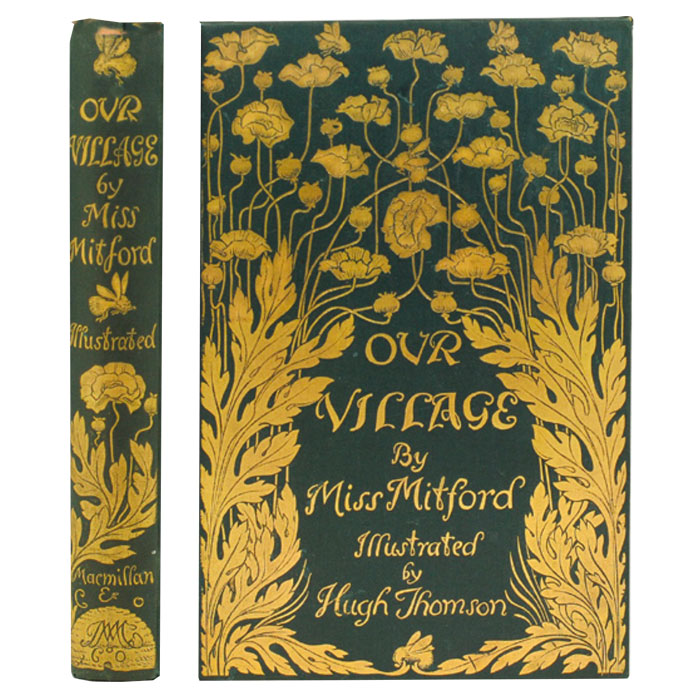
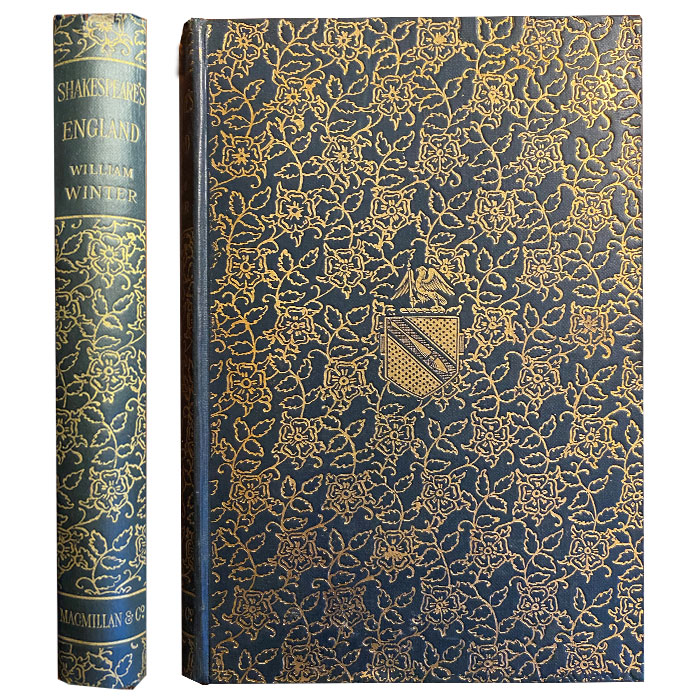

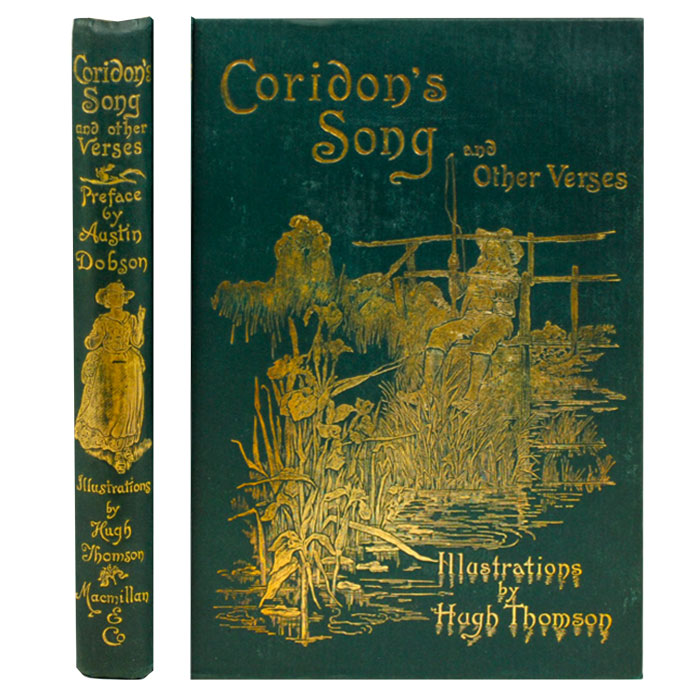


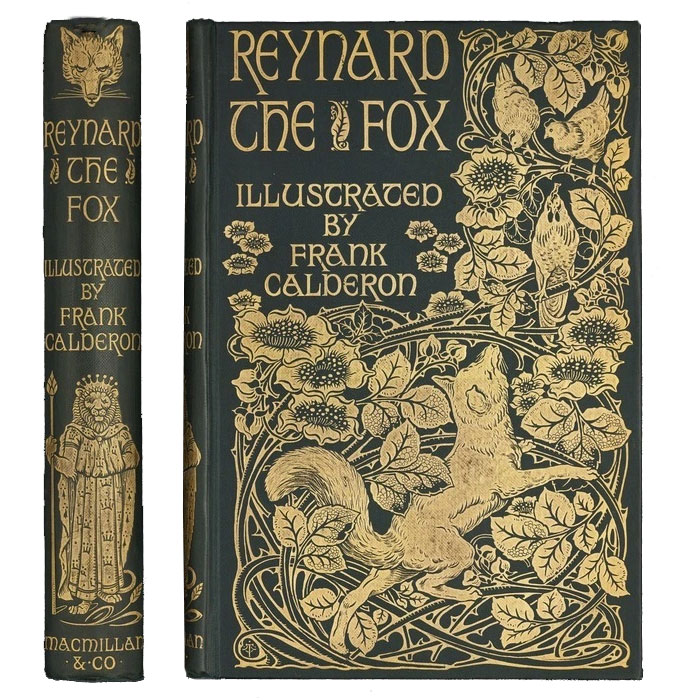
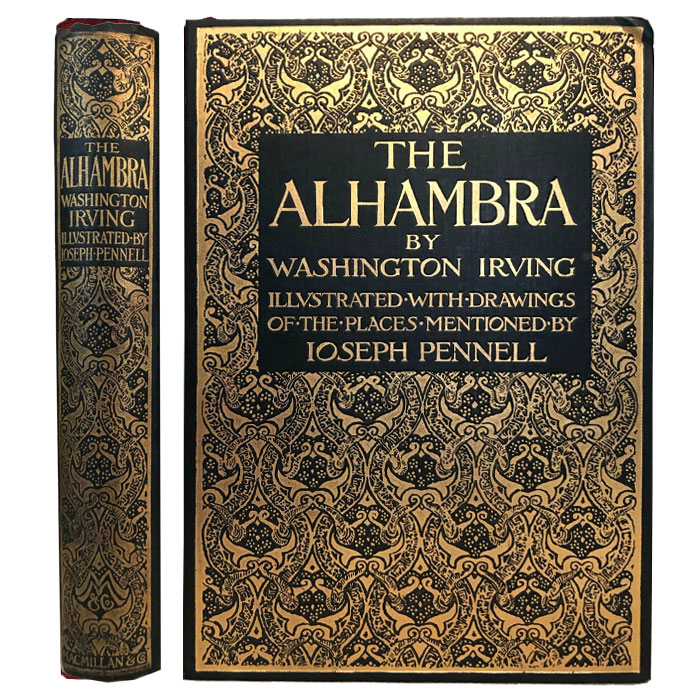




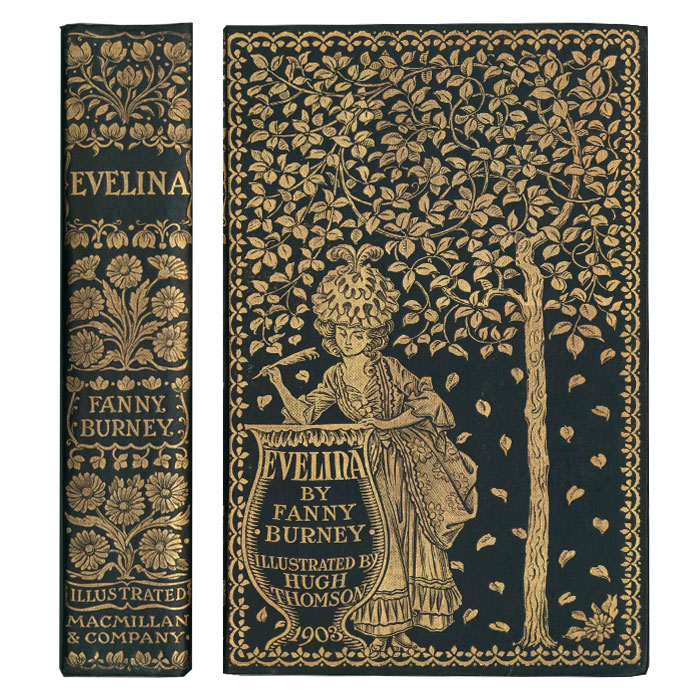














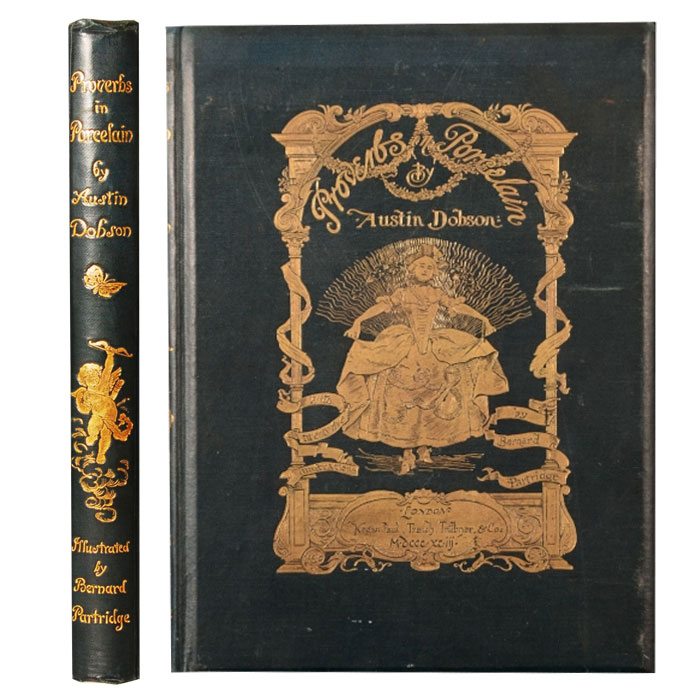





4 Comments
Clara · 22 November 2024 at 2:08 am
Wow Daisy, thank you thank you thank you! Your answer was much more than I could’ve ever wished for! And so quick too! My research is going to be something along the lines of an investigation on the marketing and social relevance of the Cranford series in its time in comparison to the marketing and social relevance of a collection by a publishing house in Spain (where I’m from!) that came out in 2020 and was inspired design-wise in the Cranford Collection illustrations! The collection is called “Novelas Eternas” and the publishing house is called RBA, if you want to check it out! Personally, I have that whole collection (75 books!)
Daisy · 22 November 2024 at 8:31 am
Oh, that sounds fascinating. Yes, I’m familiar with the RBA series – I have several volumes from their English collection (along with half an arcticle written about how they’ve adapted the cover designs from the original Cranford series – they look so different when coloured but so pretty). You may be familiar with the French Austen collector’s editions by publisher Hauteville who did something similar design-wise – it could be interesting to explore how these compete with the RBA subscription in France since both are available there using different marketing methods. Best of luck! Dx
Clara · 21 November 2024 at 10:27 pm
Hi! I don’t know how long has this post been up, but I hope you can answer my question still. I am an English and Literature Student and I am looking to do the final dissertation of my career partly in the Cranford Series. Unfortunately, I’m having difficulty finding information specifically referring to it and this post has been very useful. Could you perhaps tell me where did you find this information regarding the collection? I would be very grateful if you could share any sources that refer to this collection in specific. Thank you very much!
Daisy · 21 November 2024 at 10:52 pm
Hi Clara. What a fun dissertation topic! The information in this article is drawn from multiple sources. Some of it is primary data from publication details and dust jackets on the books themselves that I have in my personal collection. Other details were drawn from publications released at the same time as the books themselves (e.g. The Bookman) – you’ll find newspaper advertisements contain a wealth of information – as well as published interviews with Macmillan staff, and authors and illustrators who contributed to the series. Biographies also contain snippets of relevant information, there’s a fascinating book about the Brocks by CM Kelly, for example. Hope this helps, and I’d love to know what more find out in your research! Dx